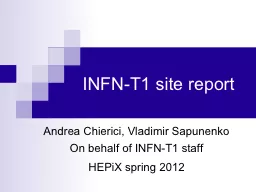PPT-THE CASE OF ANDREA YATES
Author : dardtang | Published Date : 2020-08-29
HER BACKGROUND Graduated from high school as valedictorian Captain of the swim team Officer in the National Honor Society Worked as a registered nurse at the University
Presentation Embed Code
Download Presentation
Download Presentation The PPT/PDF document "THE CASE OF ANDREA YATES" is the property of its rightful owner. Permission is granted to download and print the materials on this website for personal, non-commercial use only, and to display it on your personal computer provided you do not modify the materials and that you retain all copyright notices contained in the materials. By downloading content from our website, you accept the terms of this agreement.
THE CASE OF ANDREA YATES: Transcript
Download Rules Of Document
"THE CASE OF ANDREA YATES"The content belongs to its owner. You may download and print it for personal use, without modification, and keep all copyright notices. By downloading, you agree to these terms.
Related Documents














